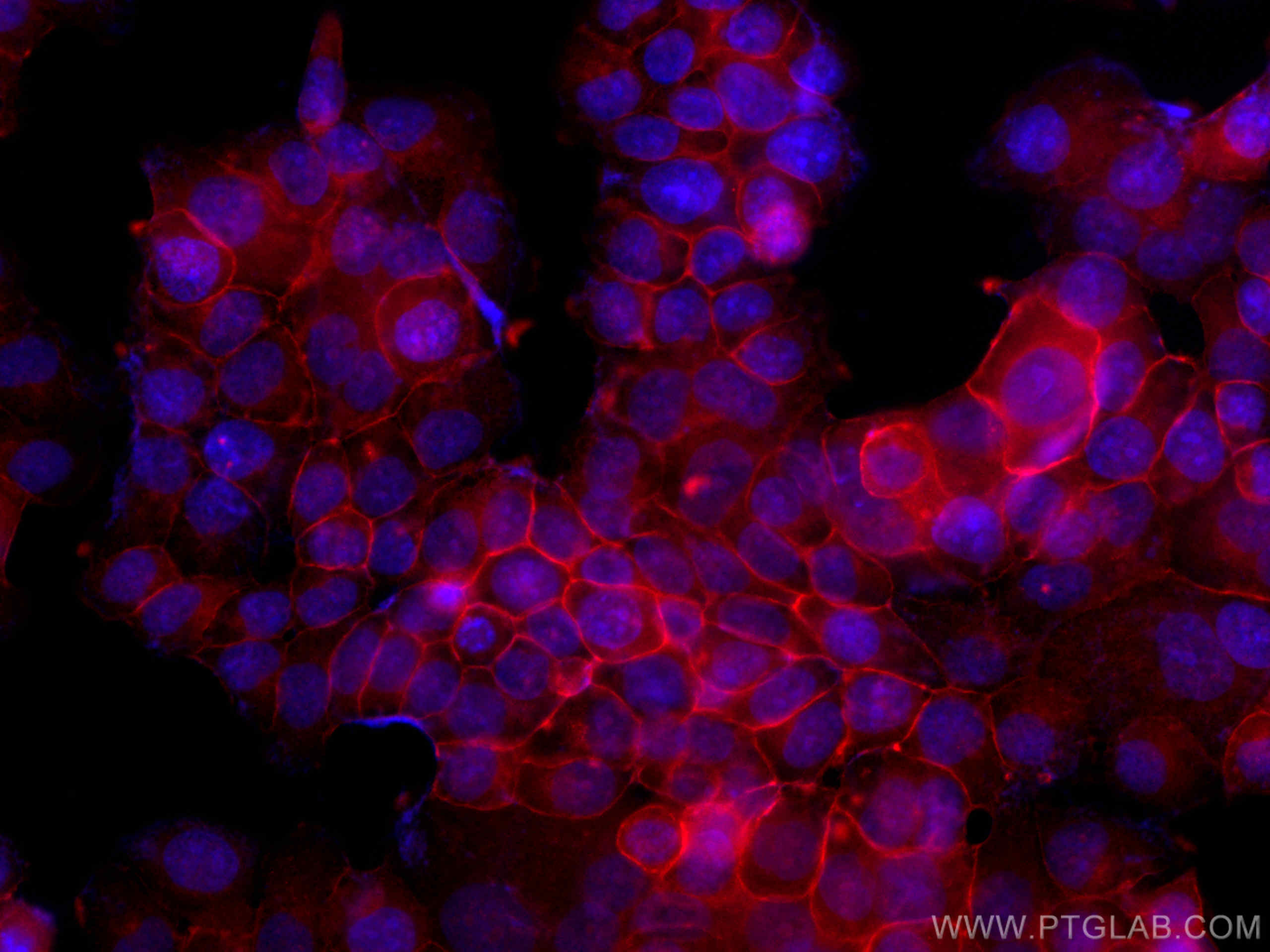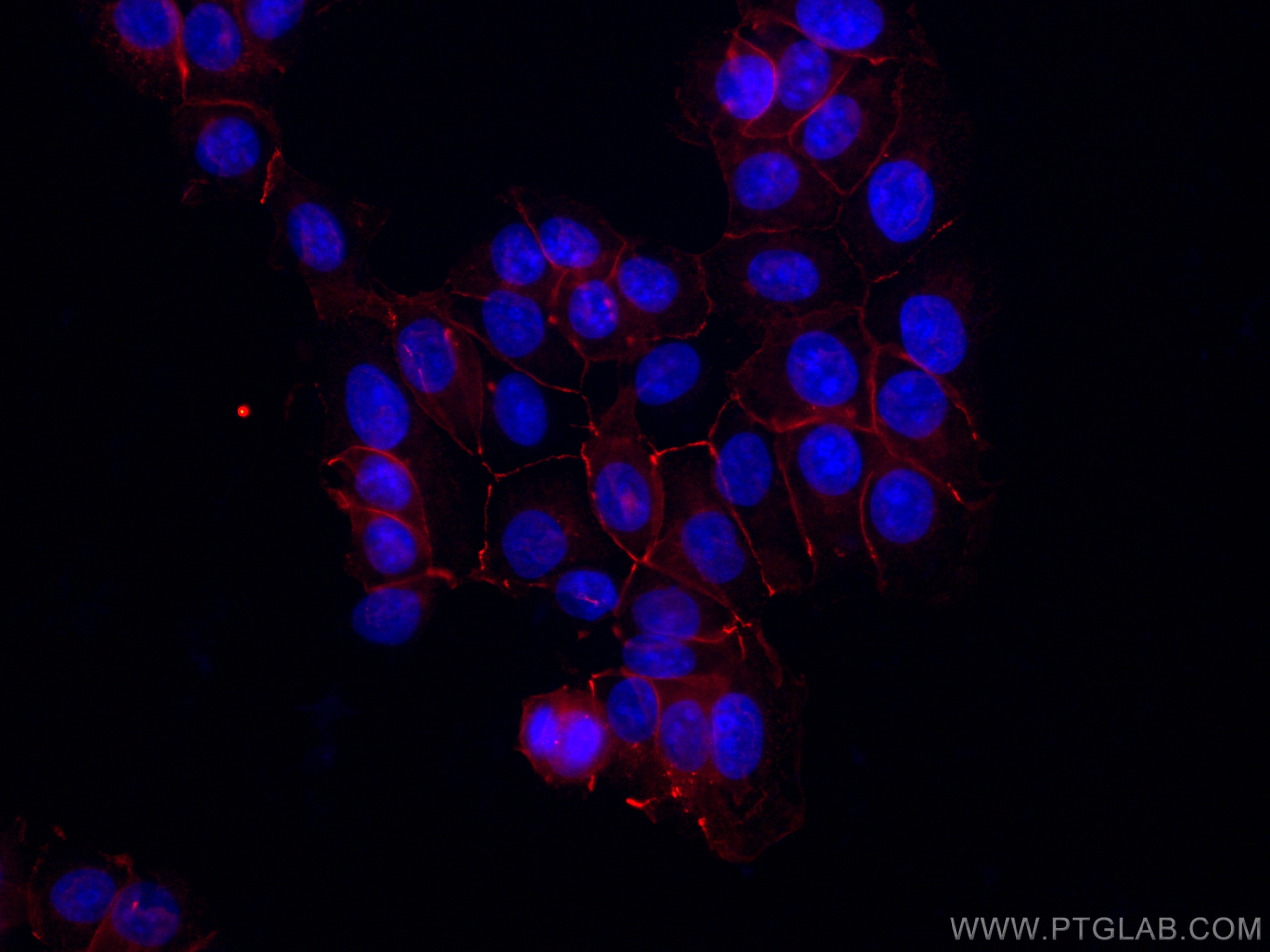- Featured Product
- KD/KO Validated
CoraLite®594-conjugated Occludin Polyclonal antibody
Occludin Polyclonal Antibody for IF
Host / Isotype
Rabbit / IgG
Reactivity
human, mouse, rat
Applications
IF
Conjugate
CoraLite®594 Fluorescent Dye
Cat no : CL594-13409
Synonyms
Validation Data Gallery
Tested Applications
| Positive IF detected in | MCF-7 cells, T-47D cells |
Recommended dilution
| Application | Dilution |
|---|---|
| Immunofluorescence (IF) | IF : 1:300-1:1200 |
| Sample-dependent, check data in validation data gallery | |
Product Information
CL594-13409 targets Occludin in IF applications and shows reactivity with human, mouse, rat samples.
| Tested Reactivity | human, mouse, rat |
| Host / Isotype | Rabbit / IgG |
| Class | Polyclonal |
| Type | Antibody |
| Immunogen | Occludin fusion protein Ag4057 相同性解析による交差性が予測される生物種 |
| Full Name | occludin |
| Calculated molecular weight | 522 aa, 59 kDa |
| GenBank accession number | BC029886 |
| Gene symbol | OCLN |
| Gene ID (NCBI) | 4950 |
| RRID | AB_2919795 |
| Conjugate | CoraLite®594 Fluorescent Dye |
| Excitation/Emission maxima wavelengths | 588 nm / 604 nm |
| Form | Liquid |
| Purification Method | Antigen affinity purification |
| Storage Buffer | PBS with 50% Glycerol, 0.05% Proclin300, 0.5% BSA, pH 7.3. |
| Storage Conditions | Store at -20°C. Avoid exposure to light. Stable for one year after shipment. Aliquoting is unnecessary for -20oC storage. |
Background Information
Occludin is an integral membrane protein located at the tight junction. It is a tetraspanin protein with four transmembrane domains, intracellular N and C termini and two extracellular loops. Occludin plays a role in the formation and regulation of the tight junction paracellular permeability barrier. Occludin can exist in different isoforms, owing to modifications at the posttranscriptional and posttranslational levels, the monomeric occludin migrates as 53-65 kDa on SDS-PAGE (PMID: 22083955; 19457074).
Protocols
| Product Specific Protocols | |
|---|---|
| IF protocol for CL594 Occludin antibody CL594-13409 | Download protocol |
| Standard Protocols | |
|---|---|
| Click here to view our Standard Protocols |



